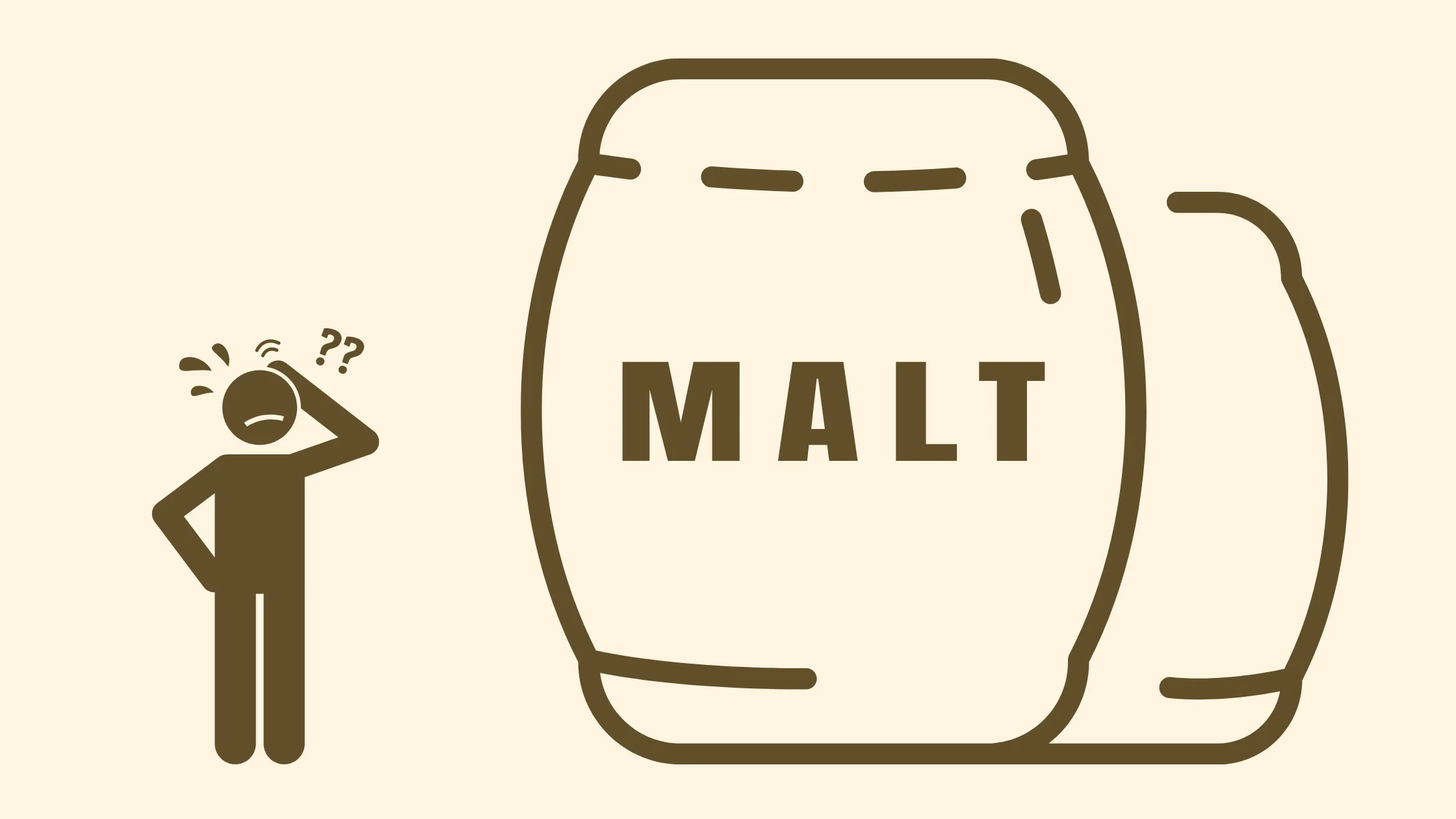Ever wondered how your favorite beer or whiskey begins its journey to your glass? The answer lies in a crucial process known as malting. This fascinating transformation of grains, primarily barley, into a brewer’s gold is the first step in crafting the alcoholic beverages we love.
Malting is all about soaking grains to start germination, then drying them out to stop the process, a method that awakens enzymes necessary for turning starches into fermentable sugars. These sugars are the backbone of brewing and distilling, serving as the feast for yeast that eventually brings alcohol to life. The art and science of malting play a significant role in defining the flavor, color, and texture of beer and whiskey, making it a pivotal process in beverage production.
So, let’s dive into the world of malting, exploring its importance, steps, and the meticulous care that goes into producing the perfect malt for that perfect sip.
What is malting?
Malting is a pivotal process in the production of beer and whiskey, serving as the foundation for creating these beloved beverages. At its core, malting involves soaking grains, typically barley, in water to initiate germination, followed by drying the germinated grains with hot air to halt the process. This transformation is crucial as it activates enzymes within the grains, converting stored starches into fermentable sugars.
These sugars are essential for the later stages of brewing and distilling, providing the raw material for yeast to produce alcohol. The malting process not only influences the flavor, color, and texture of the final product but also plays a significant role in determining the character and quality of the beverage. Through careful control of the malting conditions, producers can tailor the malt to achieve specific profiles, making malting both an art and a science integral to the craft of beverage production.
Why is malting important in brewing and distilling?
Malting is essential for brewing and distilling because it transforms grains’ starches into fermentable sugars, which are crucial for alcohol production. This process not only supplies the basic ingredients for yeast fermentation but also significantly influences the flavor, color, and body of the final beverage. Through the malting process, producers can craft a diverse range of malt profiles, enabling them to produce a wide variety of beer and whiskey styles.
Thus, malting plays a pivotal role in determining the quality and character of the beverage, making it a critical element for brewers and distillers who aim to achieve specific taste profiles and ensure consistency in their products.
What are the main steps in the malting process?
The malting process consists of three main steps: steeping, germination, and kilning. Initially, steeping involves soaking the grains in water to increase their moisture content, which is crucial for activating enzymes within the grains. Following steeping, germination takes place, where the grains begin to sprout, leading to the enzymatic breakdown of starches into sugars.
The final step, kilning, involves drying the germinated grains to halt the germination process. This not only stops the growth but also develops the malt’s color and flavor, which are critical for the character of the final beer or whiskey. Each step is meticulously controlled to produce malt with the desired qualities, directly influencing the flavor, color, and alcohol content of the beverage.
Steeping: Water absorption by grains
Steeping initiates the malting process, involving the submersion of grains in water. This critical step is aimed at increasing the moisture content within the grains, a prerequisite for activating the malting enzymes. It ensures grains are adequately prepared for the next phase, making water absorption a foundational aspect for successful malting.
Germination: Activation of enzymes
Germination follows steeping, marked by the sprouting of grains. This phase is pivotal for the activation of enzymes, which are responsible for the breakdown of starches into simpler sugars. It lays the groundwork for the malt’s flavor and its ability to ferment, as the enzymatic activity transforms the grain’s internal structure, readying it for the final transformation.
Kilning: Drying and flavor development
Kilning concludes the malting process, where hot air is used to dry the germinated grains. This step halts the germination process and reduces the malt’s moisture content to desired levels. Kilning is crucial not only for stopping growth but also for developing the malt’s distinct color and flavor.
The control over temperature and duration during kilning allows for the precise crafting of the malt’s characteristics, directly influencing the flavor and appearance of the final beer or whiskey.
How does steeping initiate the malting process?
Steeping is the first step in the malting process, crucial for increasing the moisture content of grains. This phase is essential as it prepares the grains for germination by activating essential enzymes. By soaking the grains, they are brought out of their dormant state, setting the foundation for the enzymatic activities needed to convert starches into fermentable sugars.
This initiation is vital, determining the efficiency and effectiveness of the malting process, which directly impacts the quality of the malt and, subsequently, the flavor and character of the final beer or whiskey.
Soaking grains to increase moisture content
Soaking grains serves as the foundational step in the malting process, specifically designed to elevate their moisture content. This essential action softens the grains, optimally preparing them for the critical phase of germination. Adequate water absorption is key, ensuring the grains are suitably primed for the enzymatic activities that follow.
Initiates enzyme activity
The moisture increase from soaking is pivotal in triggering the activation of enzymes within the grains. These enzymes play a vital role in converting the grains’ stored starches into fermentable sugars, a process at the heart of malting. This enzymatic activation is essential, setting the stage for producing beer and whiskey with the desired characteristics of flavor and alcohol content.
What happens during germination?
During germination, the soaked grains start to sprout, entering a vital phase in the malting process characterized by rootlet growth. This stage facilitates the enzymatic breakdown of starches within the grain into simpler, fermentable sugars, crucial for the fermentation process. Germination is meticulously managed to maximize enzyme activity, ensuring the malt acquires the necessary attributes for flavor and fermentability in both beer and whiskey.
This transformative period is essential for defining the malt’s quality and attributes, significantly influencing the taste, color, and alcohol content of the resulting beverages.
Rootlet growth
Rootlet growth marks a significant phase in the germination process, indicating the grain’s active development and readiness for further malting stages. This growth is not only a sign of vitality but also a critical factor for the maltster to monitor, as it signals the optimal moment to proceed to the next malting phase, leveraging the peak of enzymatic activity.
Enzymatic breakdown of starches
The enzymatic breakdown of starches into fermentable sugars is the centerpiece of the germination stage. This crucial biochemical process, facilitated by enzymes activated during germination, transforms the grain’s stored starch reserves into sugars that are fermentable. This transformation is vital for the malt’s contribution to the flavor profile, alcohol content, and overall body of the final beer or whiskey, laying the foundation for the beverage’s character.
What is the purpose of kilning in malting?
Kilning is the final step in the malting process, designed to halt the germination by thoroughly drying the sprouted grains. This crucial phase ensures the cessation of rootlet growth and locks in the malt’s desired characteristics. Kilning is essential not just for reducing the moisture content to stabilize the malt for storage and subsequent brewing but also for significantly influencing the malt’s color and flavor profile.
The temperature and duration of the kilning process are meticulously managed to allow the malt to develop specific qualities needed for crafting various styles of beer and whiskey. Through kilning, the malt gains its distinctive flavor nuances and color, pivotal for the final beverage’s taste and visual appeal.
Stops germination process
Kilning effectively stops the germination process by drying the grains, halting the growth of rootlets. This action locks in the desired enzymatic changes, preventing further biochemical activity that could alter the malt’s intended quality. Ceasing germination at the optimal moment is crucial for securing the malt’s characteristics, setting the stage for its use in brewing and distilling.
Develops malt color and flavor
The kilning process is pivotal in developing the malt’s color and flavor, achieved through precise control over heating. This stage is vital for determining the malt’s impact on the final beverage’s taste and visual appeal. By manipulating temperature and duration, maltsters can create a spectrum of malt types, each offering distinct color and flavor profiles tailored to various beer and whiskey styles.
How does malt quality affect beer and whiskey flavor?
The quality of malt significantly influences the flavor, body, and color of beer and whiskey. High-quality malt contains optimal fermentable sugars, essential for achieving the desired alcohol content and nuanced flavor profiles. The characteristics of the malt, such as its sweetness, toastiness, and color, directly impact the taste and appearance of the beverage.
For example, darker malts can impart richer flavors and deeper colors, enhancing the beverage’s complexity. Additionally, the malt’s fermentability plays a crucial role in the smoothness and complexity of the beer or whiskey, highlighting the importance of malt quality in the production of premium beverages. Selecting and processing malt with care is therefore vital for brewers and distillers striving to create drinks with specific taste profiles and high-quality standards.
Influences sweetness, body, and color
The malt’s quality influences the sweetness, body, and color of beer and whiskey, playing a pivotal role in shaping the beverage’s sensory profile. The composition and characteristics of the malt determine how it enhances the sweetness, enriches the body, and deepens the color, contributing to a richer and more complex drinking experience.
Affects fermentability and alcohol content
Furthermore, malt quality significantly affects fermentability and alcohol content, essential aspects of the brewing and distilling processes. Superior quality malt ensures a more efficient conversion of starches into fermentable sugars, which is critical for effective fermentation. This efficiency not only influences the alcohol content but also affects the overall smoothness and flavor depth of the beer or whiskey, highlighting the critical importance of selecting high-quality malt for top-tier beverage production.
What factors influence malt quality?
Several critical factors determine malt quality, including the type of grain used (such as barley, wheat, or rye), and the specific malting conditions like temperature, humidity, and duration. The choice of grain significantly affects the malt’s flavor profile and fermentability, with each type offering distinct characteristics. Malting conditions are equally pivotal, as precise management of these elements ensures the optimal activation of enzymes and the development of desired malt attributes.
Moreover, the quality of the raw grain itself, including factors like cleanliness and germination capacity, plays a significant role in the final quality of the malt. These components collectively influence the malt’s suitability for brewing and distilling, directly impacting the flavor, color, and body of the final beer or whiskey. Careful attention to these factors is essential for crafting high-quality malt that meets the specific needs of brewers and distillers.
Grain type: Barley, wheat, rye
The choice of grain type—be it barley, wheat, or rye—plays a pivotal role in determining malt quality, with each grain imparting its distinctive flavor and fermentability properties. Barley is widely appreciated for its robust enzyme profile and adaptability, making it a staple in malt production. Wheat contributes a lighter, more delicate flavor, whereas rye introduces a bold, spicy character, each significantly influencing the malt’s impact on the final beverage’s taste.
Malting conditions: Temperature, humidity, time
Malting conditions, such as temperature, humidity, and the duration of the malting process, are critical factors in achieving the desired malt quality. Proper temperature regulation is essential for activating the necessary enzymes, while humidity levels are key to controlling the grain’s moisture content. The timing of each phase in the malting process must be precisely calibrated to ensure that these biochemical transformations enhance the malt’s flavor, color, and fermentability, tailored to specific brewing and distilling needs.
What are the challenges in the malting process?
The malting process encounters several challenges, key among them being maintaining consistent quality and controlling moisture and temperature. Consistent malt quality is essential for brewers and distillers, as variations can drastically impact the flavor, color, and alcohol content of the final beverage. This necessitates precise management of malting conditions, particularly temperature and humidity, to ensure the optimal enzyme activation and development of desired malt characteristics.
Moreover, the process must be meticulously timed to avoid under or over-modification of the grains, which could lead to issues in fermentability or off-flavors. Addressing these challenges requires a high degree of expertise and vigilance, underscoring the complexity of producing malt that consistently meets the exacting standards of brewing and distilling.
Maintaining consistent quality
Achieving consistent quality in malt production is paramount, as any deviation can profoundly impact the flavor, color, and alcohol content of the final beverage. This challenge demands stringent quality control measures throughout all stages of malting, from the selection of premium grains to the precise execution of each step in the malting process. Ensuring uniformity is crucial for producing malt that reliably meets the brewing and distilling industry’s high standards.
Controlling moisture and temperature
Controlling moisture and temperature plays a critical role in the success of the malting process. Appropriate moisture levels are essential for kickstarting the germination phase, while accurate temperature regulation is needed to activate enzymes effectively without harming the grain. Mastering these factors is vital for cultivating the desired malt attributes, such as optimal color, rich flavor, and suitable fermentability.
Moreover, meticulous management of moisture and temperature is necessary to avert the emergence of unwanted characteristics, guaranteeing the creation of superior quality malt.
How is malt evaluated for brewing and distilling use?
Malt evaluation for brewing and distilling encompasses a detailed analysis to ascertain its quality and appropriateness for beverage production. This process involves malt analysis and sensory evaluation. Malt analysis examines quantifiable properties such as moisture content, protein levels, and enzyme activity, essential indicators of the malt’s brewing or distilling performance.
Sensory evaluation, meanwhile, delves into the malt’s flavor, aroma, and color, providing insights into its potential influence on the final beverage’s sensory characteristics. Together, these assessments offer a comprehensive understanding of the malt’s attributes, enabling brewers and distillers to select the ideal malt for crafting beverages with the desired taste, appearance, and alcohol strength.
Malt analysis: Moisture, protein, enzyme activity
Malt analysis plays a pivotal role in evaluating malt quality, focusing on crucial metrics like moisture content, protein levels, and enzyme activity. These factors are indispensable for predicting the malt’s performance in brewing or distilling processes. Moisture content is key for optimal handling and storage; protein levels affect the final beverage’s clarity and body; and enzyme activity is essential for the efficient conversion of starches into fermentable sugars.
Precise analysis of these attributes ensures the malt’s compatibility with the specific requirements of beverage production.
Sensory evaluation: Flavor, aroma, color
Sensory evaluation delves into the malt’s flavor, aroma, and color, which are critical for determining its impact on the sensory appeal of the final beverage. The malt’s flavor and aroma offer a glimpse into its potential to enhance the taste and olfactory experience of beer or whiskey, while its color influences the visual attractiveness of the drink. This assessment aids brewers and distillers in forecasting how the malt will affect the overall sensory profile, enabling them to make informed choices to achieve the desired characteristics in their products.





